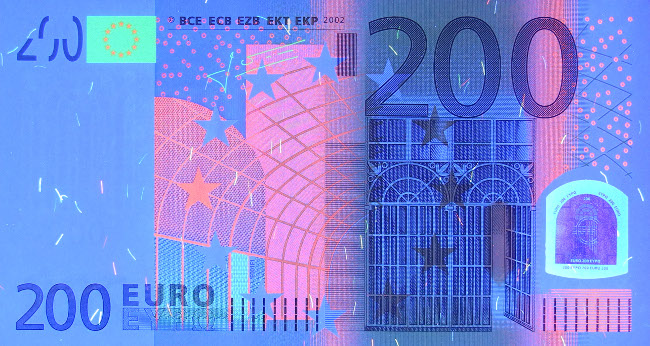The Intricacies of Counterfeit Currency: Understanding Quality and Legal Implications
While the term "counterfeit money" frequently conjures images of criminal activity and dubious negotiations, the reality is that the production and circulation of counterfeit currency incorporate a variety of inspirations and repercussions that can be as complex as they are prohibited. The arrival of digital resources and innovations has made discussions on counterfeit money more common, leading individuals to check out different aspects of this underground world. Comprehending the nuances of top quality counterfeit money, and the prospective ramifications of engaging with it, is crucial for anyone thinking about the subject.
Specifying Counterfeit Currency
Counterfeit currency describes costs or coins produced with the intent to trick, created to imitate legitimate currency issued by a government or main bank. Quality is typically assessed based on several factors, including:
Materials Used: High-quality counterfeit notes may use similar paper, ink, and security functions found in authentic currency.
Detail and Design: A focus on duplicating great information, such as watermarks or holograms, is essential for developing believable counterfeits.
Printing Techniques: Sophisticated techniques, often employing commercial-grade printing devices, enable the production of convincing reproductions.
The Economics of Counterfeiting
The reasons individuals or groups take part in counterfeiting can be differed, but often include the list below aspects:
Earnings Motive: Counterfeiters frequently run in the shadows to optimize their earnings through the circulation of fake currency.
Ease of access: The availability of innovative printing technologies has actually made it easier for counterfeiters to produce high-quality notes.
Need: The undercurrent of need for counterfeit money exists due to the bargaining power it might afford to some individuals or companies.
Nevertheless, engaging in the production or circulation of counterfeit currency is prohibited, with extreme legal repercussions.
Legal Implications
Diving into the world of counterfeit money brings with it severe legal effects, including:
Lawbreaker Charges: In lots of jurisdictions, producing or distributing counterfeit currency is a felony. Falschgeld bestellen might result in prolonged prison sentences and large fines.
Civil Liability: Beyond criminal charges, people might discover themselves facing civil lawsuits from those damaged by the circulation of counterfeit notes.
Cops Investigation: Engaging with counterfeit currency frequently draws in the attention of law enforcement companies, causing examinations and potential arrests.
This legal structure highlights that the allure of counterfeit currency is stuffed with risk.
The Quality Factor: What to Look For
Top quality counterfeit currency can be hard to identify from the real thing, particularly as technology continues to advance. Here are some essential indicators that individuals often try to find when assessing the quality of counterfeit notes (although one should bear in mind that belongings or blood circulation of counterfeit currency is unlawful):.
Paper Quality: Genuine currency uses a specific type of paper that contains a specific ratio of cotton and linen, making it more resilient than regular paper.
Color Shifting Ink: Many legitimate banknotes include color-shifting ink that alters color when viewed from various angles. High-quality counterfeits might reproduce this feature, though inadequately.
Watermarks: Most currencies include watermarks that are noticeable when held up to light. Counterfeit reproductions might fall brief in simulating this hallmark.
Security Threads: Genuine currency has actually embedded security threads that can be detected by touch; quality fakes may not duplicate this function properly.
Microprinting: The use of microprinting (little text that appears blurred to the naked eye) is another often badly replicated function.
The Risks of Counterfeiting.
Engaging with counterfeit money surpasses legal implications; there are considerable threats involved, including:.
Financial Loss: Even if one effectively acquires counterfeit currency, there is always the risk of getting caught, resulting in financial loss along with legal problems.
Social Consequences: Being associated with prohibited activities can stain one's track record and relationships, both personal and professional.
Increased Law Enforcement Scrutiny: Buying or selling counterfeit money piques the interest of police, possibly resulting in investigations that put people at greater risk.
FAQs.
1. Is it illegal to own counterfeit money?
Yes, having counterfeit money is unlawful, and individuals might face criminal charges for merely holding or attempting to utilize such currency.
2. What should I do if I inadvertently get counterfeit currency?

If you think that you have actually received counterfeit money, do not attempt to invest it. Instead, report the occurrence to your regional authorities or the banks where you got the counterfeit note.
3. Are there genuine uses for counterfeit currency?
No. There are no legitimate usages for counterfeit currency. Nevertheless, some individuals might create props for instructional, artistic, or film functions and can acquire special authorization for this under specific laws.
4. How can I protect myself from counterfeit currency?
Stay Informed: Familiarize yourself with the functions of genuine currency.
Usage Anti-Counterfeit Tools: Tools such as UV light detectors can assist identify counterfeit notes.
Be Cautious in Transactions: Be wary of accepting money in circumstances that feel questionable, and make transactions in trustworthy environments.
Conclusion.
The world of counterfeit currency is rife with risk, legal effects, and ethical issues. While the attraction of high-quality counterfeit notes may be intriguing to some, it is imperative to remember the legal and social effects that accompany participation in such activities. Instead of browsing the dirty waters of counterfeit money, people are encouraged to seek legitimate avenues for financial deals, focusing on stability and legality in their economic pursuits.
